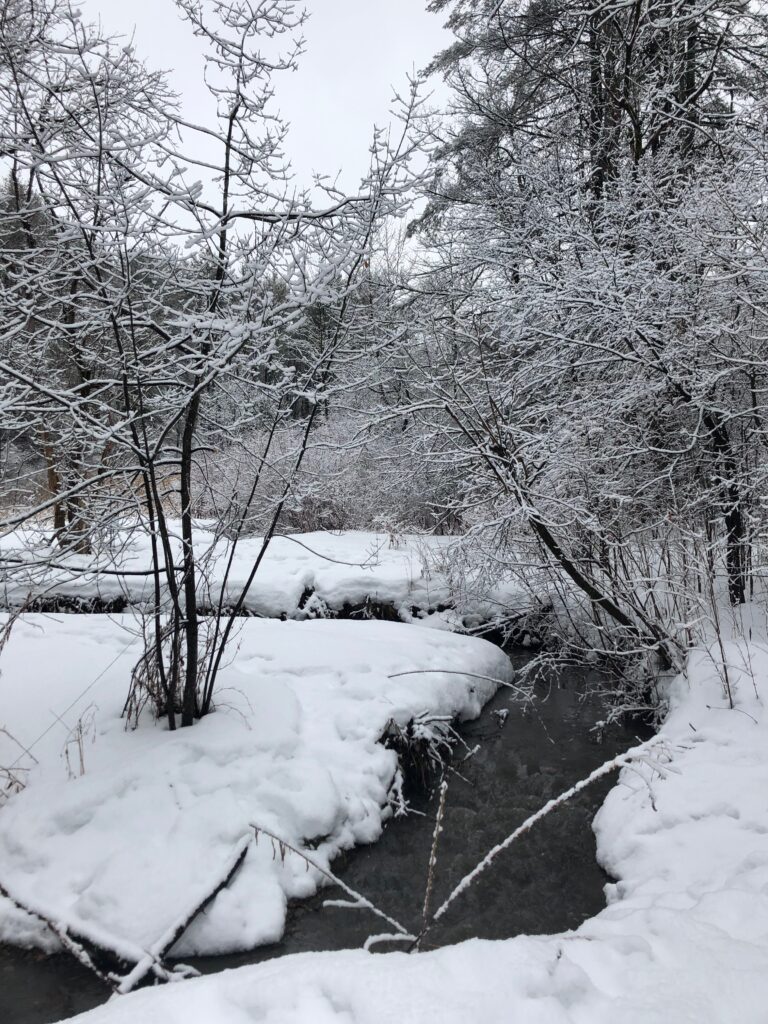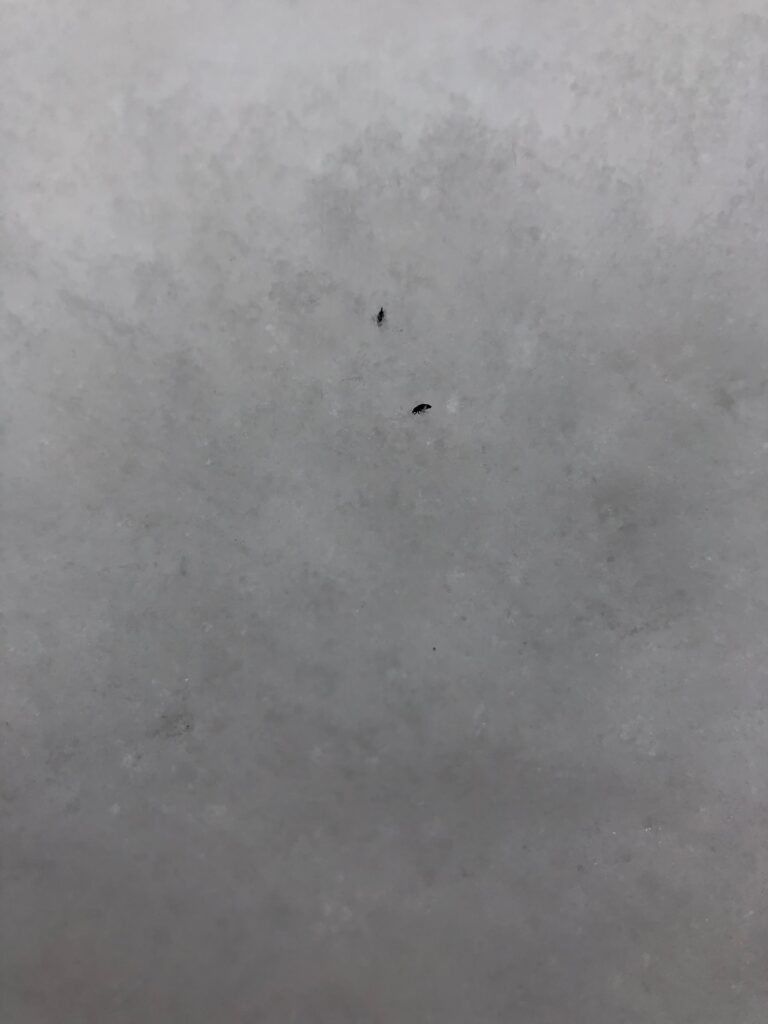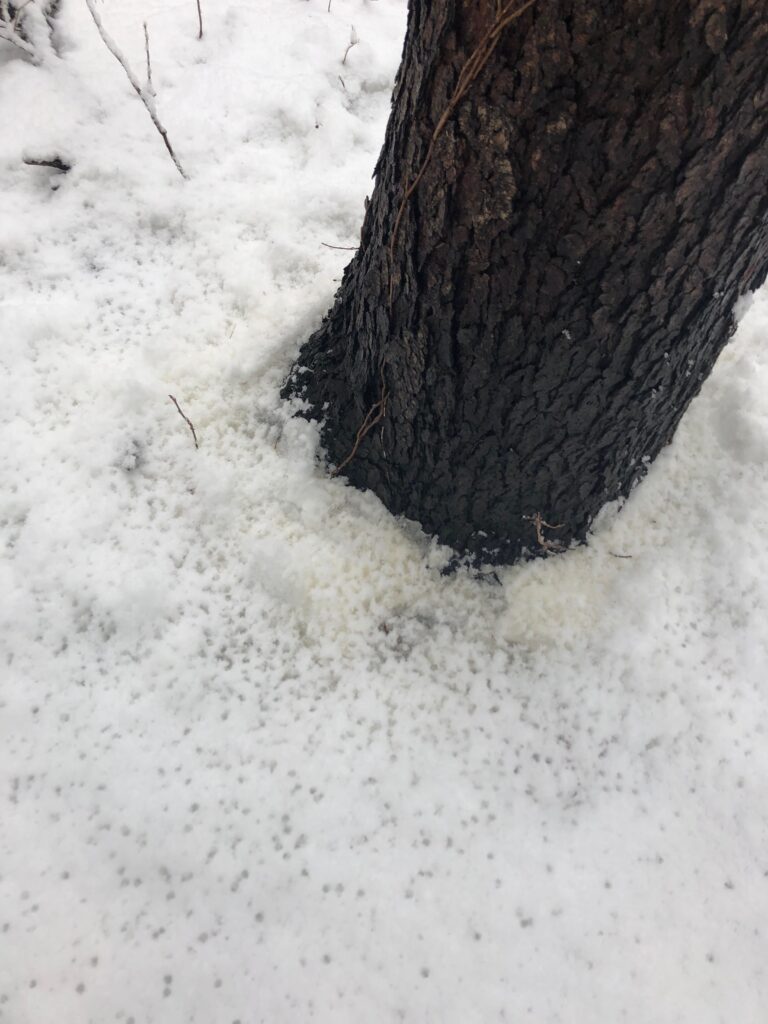Centennial Woods has only changed slightly since my last visit. There is still snow layering the branches and understory but now its new snow from the recent snowfall earlier in the day. The water level of the brook is higher than the last time I saw it most likely from the rain this morning that transitioned into fat snowflakes. Most of the animal tracks were covered up by snow but you could spot a few deer tracks leading away from the brook deeper into Centennial.

As I walked through Centennial after a new layer of snow covered the forest floor I saw small black dots on the white backdrop of snow. When I crouched down I discovered that all the black dots had little legs, they were snow fleas. Snow fleas are actually a specific type of Springtail species that are called snow fleas during the winter. But they are actually found year-round. The Springtails have adapted over time to produce a special protein that acts as an antifreeze. These kinds of Springtails are able to survive the cold winters. These Snow fleas usually live in soil and leaf litter where they feed on decaying vegetation and other organic matter.

I was able to watch as the group of snow fleas made their way over large ice crystals in the snow in an attempt to find some grub. Following their trails in the snow as they jumped enormous lengths and heights for their size I saw one group congregating near a fungus attached to the trunk of a tree that had fallen a while ago. As I continued to the brook in Centennial woods I noticed more black dots in the snow, but this time the snow was yellow. When I took a closer look I noticed that many of the trees had yellow snow at the base. Of course, my first thought was pee, but then I realized that it was actually sap. I wondered if the snow fleas were attracted to the leaking sap residue in the snow.

